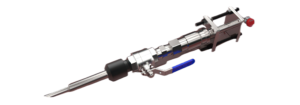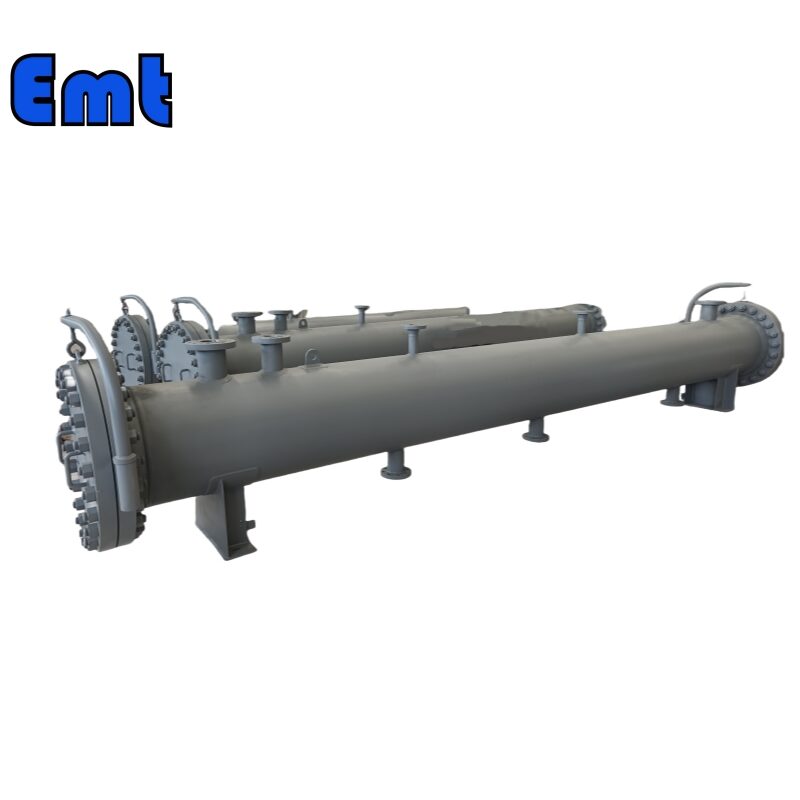Description
Introduction
What is an Injection Quill?
An injection quill introduces corrosive chemicals into a pipeline. It prevents damage to the pipe wall and side port at the injection point. The quill ensures the even dispersion of chemicals into the pipeline’s center. This avoids channeling down the pipe wall. The stinger and body are made from chemical-resistant alloys or plastics. Common materials include Kynar, 316 SS, Hastelloy C-276, and PVC. Each unit features an integral removable ball check with a spring. This prevents the chemical from flowing back into the main flow when the system shuts down.
Early injection quills were simple tubes extending into a pipe. This design was vulnerable to erosion corrosion and cavitation. Vortex shedding and other hazards exacerbated these issues. Often, these quills and adjacent piping were not properly inspected. Consequently, many cases of piping damage occurred just downstream of the quills. Modern injection quills are precision-engineered mechanical devices. They are designed to mitigate these issues, providing an effective and safe chemical injection. Today, various industries use them as part of metering systems.
Importance of Injection Quills in Industrial Applications
Role in Chemical Injection
Injection quills play a crucial role in chemical injection processes. They evenly distribute chemicals into the pipeline’s center. This even dispersion prevents localized corrosion. It also ensures the effective mixing of chemicals with the main flow. As a result, they enhance the overall efficiency of chemical treatment processes. Various chemical industries rely on them for effective and safe chemical injection.
Enhancing Process Efficiency and Safety
Injection quills significantly enhance process efficiency and safety. They prevent damage to the pipeline and port at the injection point. By ensuring even chemical dispersion, they avoid localized corrosion. This helps maintain the integrity of the pipeline system. Moreover, materials like Kynar, 316 SS, Hastelloy C-276, and PVC offer excellent chemical resistance. Retractable quills allow maintenance without depressurizing the system, increasing operational flexibility. Non-retractable quills are suitable for systems with low clogging tendencies. Overall, injection quills are essential for maintaining pipeline efficiency and safety.
Understanding Injection Quills
Components of an Injection Quill
- Nozzle
- Body
- Check Valve
- Connection Fittings
Types of Injection Quills
Standard Injection Quills
Standard injection quills are simple, fixed devices. They extend into the pipeline to inject chemicals directly. These quills are easy to install and maintain. They are cost-effective and suitable for systems with low maintenance needs. However, the pipeline must be depressurized to remove them. They work well in stable environments where frequent maintenance is not required.
Advantages:
- Easy installation and maintenance
- Cost-effective
- Suitable for systems with low maintenance needs
Uses:
- Ideal for stable environments
- Effective for systems where frequent shutdowns are feasible
Retractable Injection Quills
Retractable injection quills can be removed without depressurizing the pipeline. They are complex in design but highly beneficial for maintenance. These quills are perfect for systems prone to clogging and requiring frequent attention. The operator can retract the quill for inspection or cleaning without shutting down the system, saving time and reducing operational disruption.
Advantages:
- Removable without depressurizing the pipeline
- Ideal for frequent maintenance
- Reduces operational downtime
Uses:
- Suitable for clog-prone systems
- Ideal for environments where shutdown is not feasible
Custom Injection Quills
Custom injection quills are tailored to specific application needs. They can be designed to handle unique chemical compositions or specific pipeline conditions. These quills offer flexibility in materials, sizes, and features. Custom solutions ensure optimal performance in specialized industrial processes.
Advantages:
- Tailored to specific requirements
- Flexible in materials and design
- Ensures optimal performance in unique conditions
Uses:
- Ideal for specialized industrial processes
- Suitable for applications with unique chemical or pipeline requirements
Selection Model of Injection Quill
| Model | |||||||||||||||||||||||||||
| SI | Chemical Injector Quill | ||||||||||||||||||||||||||
| -Code | Plug | ||||||||||||||||||||||||||
| Pxxx | Type | Material | Sealing Material | ||||||||||||||||||||||||
| 0 | No Request | 0 | CS | 0 | No Request | ||||||||||||||||||||||
| 1 | Hollow Plug Body | 1 | 316SS | 3 | DSS | 1 | Viton O-Ring / PTFE Primary Packing | ||||||||||||||||||||
| 2 | Solid Plug Body | 2 | 316LSS | 4 | INCONEL | 2 | HNBR | ||||||||||||||||||||
| – Code | Injection Nut | ||||||||||||||||||||||||||
| Nxx | Connection Size | Material | |||||||||||||||||||||||||
| 0 | i.e. No Request | 0 | i.e. CS | ||||||||||||||||||||||||
| 1 | i.e. 1/4″ | 1 | i.e. 316SS | 3 | i.e. DSS | ||||||||||||||||||||||
| 2 | i.e. 1/2″ | 2 | i.e. 316LSS | 4 | i.e. INCONEL | ||||||||||||||||||||||
| – Code | Injection Tube | ||||||||||||||||||||||||||
| Sxxx-Lx″ | Connection Size | Material | Nozzle | Line size(x″) | |||||||||||||||||||||||
| 0 | No Request | 0 | CS | 0 | i.e. No Request | The most effective position for injection is generally at the center of the pipe | |||||||||||||||||||||
| 1 | i.e. 1/4″ | 1 | i.e. 316SS | 1 | i.e. Open | ||||||||||||||||||||||
| 2 | i.e. 1/2″ | 2 | i.e. 316LSS | 2 | i.e. Quill | ||||||||||||||||||||||
| 3 | i.e. DSS | 3 | i.e. Cap & Core | ||||||||||||||||||||||||
| 4 | i.e. INCONEL | ||||||||||||||||||||||||||
| – Code | Nipple and Valve(or end Flange)of Tee | ||||||||||||||||||||||||||
| Txx | Connection Size | Material | |||||||||||||||||||||||||
| 0 | i.e. No Request | 0 | i.e. CS | ||||||||||||||||||||||||
| 1 | i.e. 1/4″Nipple | a | i.e. 1/4″Nipple and Valve | 1 | i.e. 316SS | ||||||||||||||||||||||
| 2 | i.e. 1/2″Nipple | b | i.e. 1/2″Nipple and Valve | 2 | i.e. 316LSS | ||||||||||||||||||||||
| 3 | i.e. 3/4″Nipple | c | i.e. 3/4″Nipple and Valve | 3 | i.e. D SS | ||||||||||||||||||||||
| 4 | i.e. 1″Nipple | d | i.e. 1″Nipple and Valve | 4 | i.e. INCONEL | ||||||||||||||||||||||
| 5 | i.e. 1/4″Flange | e | i.e. 1/4″Nipple end Flange | ||||||||||||||||||||||||
| 6 | i.e. 1/2″Flange | f | i.e. 1/2″Nipple end Flange | ||||||||||||||||||||||||
| 7 | i.e. 3/4″Flange | g | i.e. 3/4″Nipple end Flange | ||||||||||||||||||||||||
| 8 | i.e. 1″Flange | h | i.e. 1″Nipple end Flange | ||||||||||||||||||||||||
Materials Used in Injection Quills
Stainless Steel
Stainless steel is highly resistant to corrosion. It is durable and strong. This material is ideal for harsh industrial environments.
Hastelloy
Hastelloy offers excellent resistance to corrosion. It performs well in both acidic and alkaline conditions. It is suitable for extreme environments.
PVC and CPVC
PVC (Polyvinyl Chloride) is lightweight and resistant to many chemicals. CPVC (Chlorinated Polyvinyl Chloride) can withstand higher temperatures. Both are cost-effective options for less demanding applications.
PTFE and Teflon
PTFE, commonly known as Teflon, is highly resistant to chemicals. It has a low friction coefficient. This material works well in applications requiring minimal reactivity.

 Pig Launcher and Receiver
Pig Launcher and Receiver 








Reviews
There are no reviews yet.